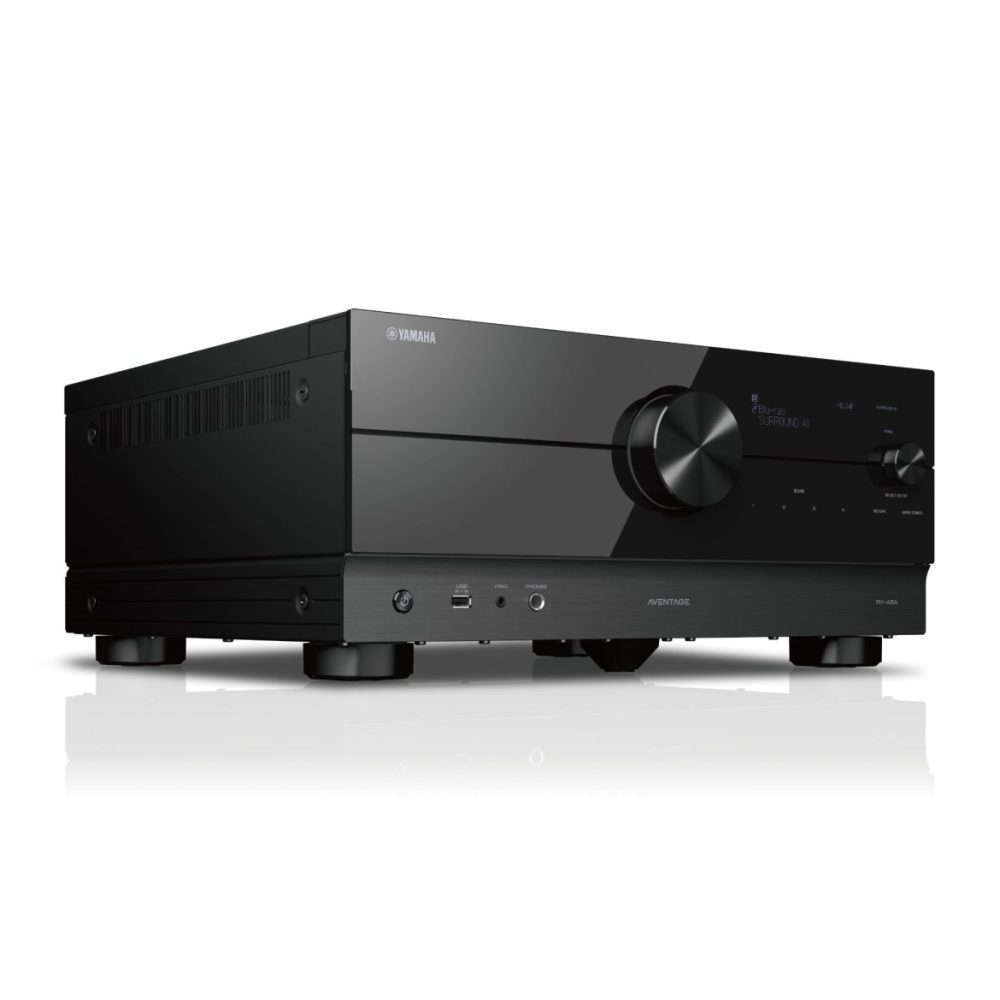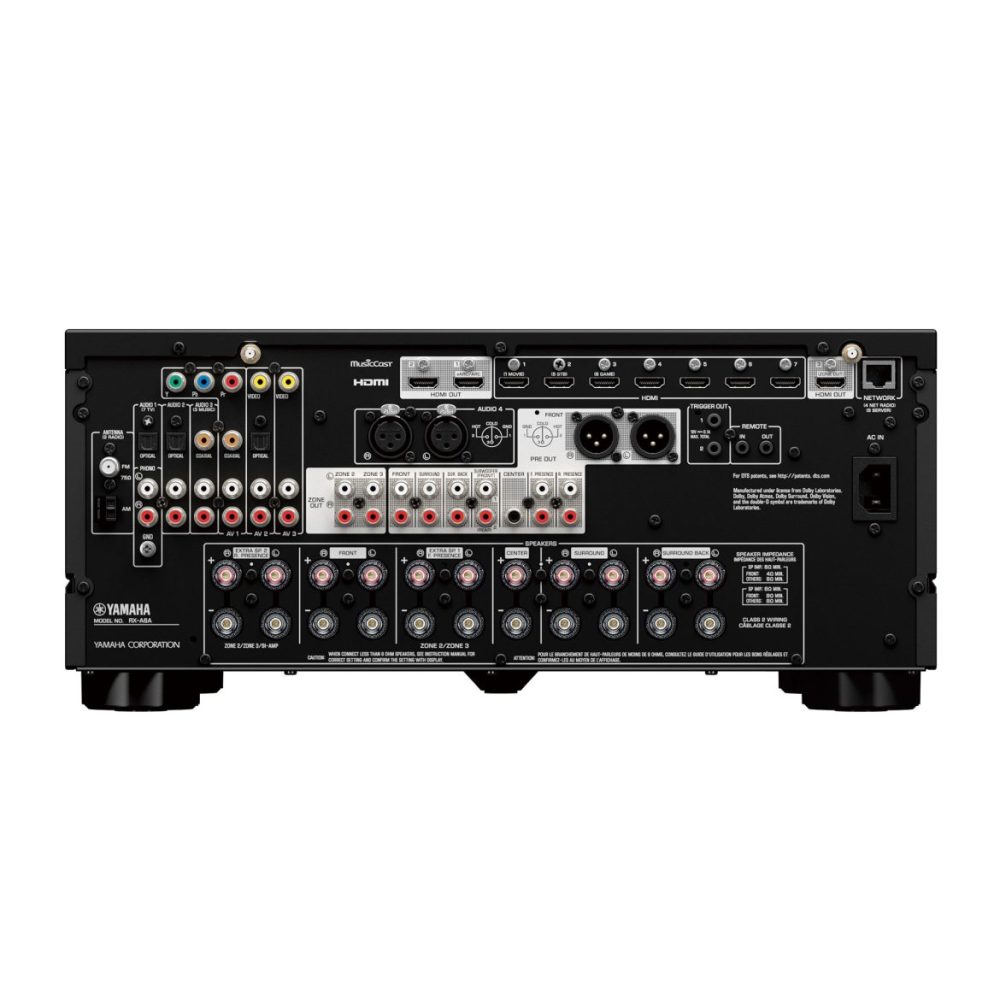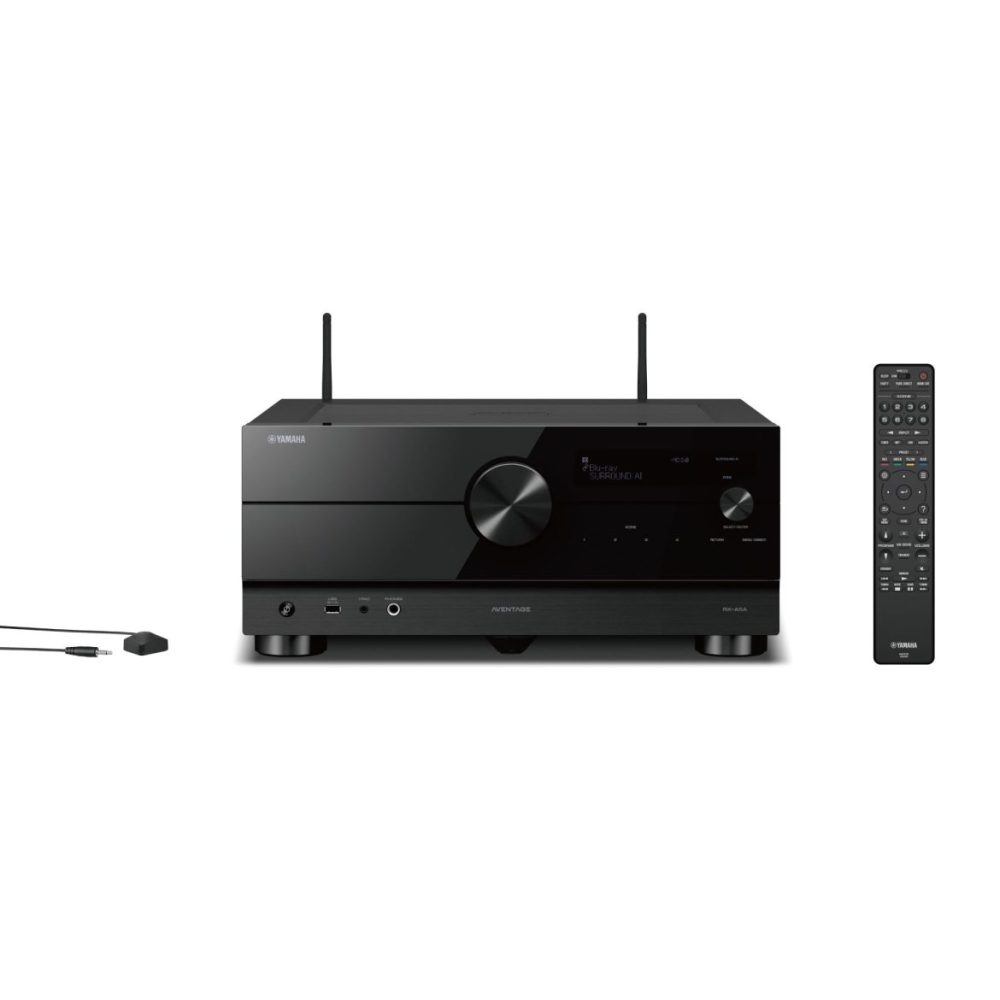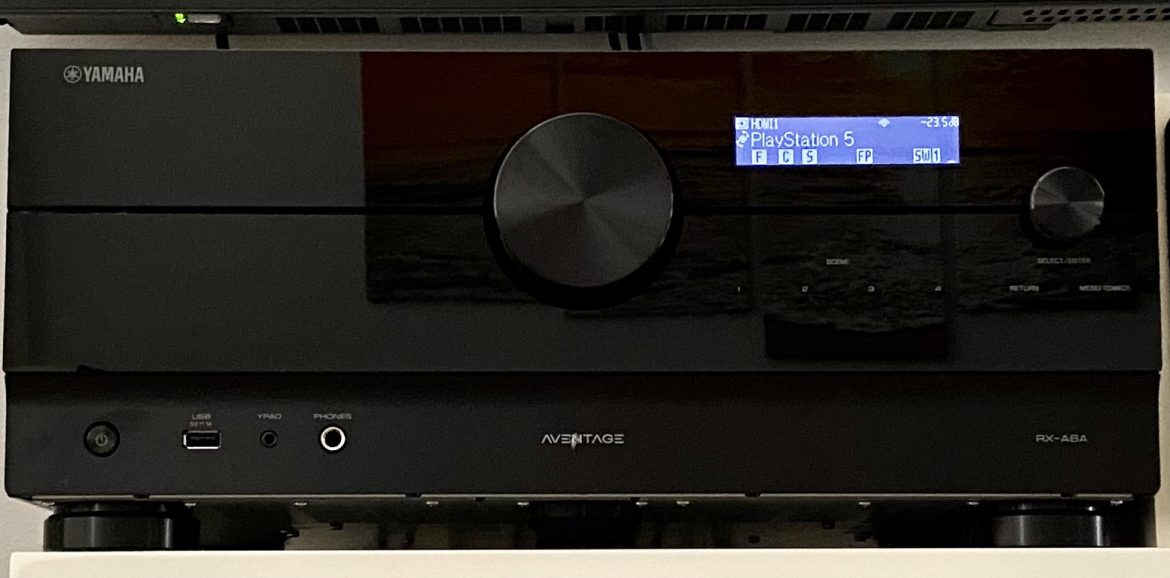TL;DR
Yamaha's RX-A6A amplifier is a heavyweight contender in home theater audio, delivering rich, precise sound thanks to its Class A amplification. It truly shines with high-quality sources, immersing you in music, games, and movies. While its design is sleek and its features comprehensive, including almost every audio format and robust connectivity, the standout is its full HDMI 2.1 support across all ports, a must-have for next-gen gaming. However, the HDMI 2.1 implementation has been a bit of a bumpy road with ongoing updates and occasional quirks, and it's a significant investment. If you're seeking top-tier sonic performance and future-proof video capabilities, dive into the full review to see if the RX-A6A is your perfect match.
Keeping abreast of audio technology is arguably less frenetic than in the TV sector. While many TV manufacturers release updated models annually, often with incremental improvements, amplifier generations can span three to five years. This is largely due to the consistent technical connection requirements of external devices; fundamentally, good sound remains good sound. Naturally, superior sound is underpinned by technology, including the quality of digital-to-analog converters, but component selection and the amplifier’s power output (specifically, the power amplifier stage) are paramount. Power and sonic excellence have long been hallmarks of Yamaha, particularly in their higher-end models. The AVENTAGE series enjoys a strong following among home theater enthusiasts, and the previous flagship, the A2080, served as a reference component in our test setup for evaluating films and games. While the A2080’s audio performance remains competitive, the demand for HDMI 2.1 support, driven by the latest gaming consoles, necessitates redesigned circuit boards. Consequently, we have rigorously evaluated the Yamaha RX-A6A, Yamaha’s current second-highest flagship model, and present our assessment.
Yamaha RX-A6A: Sonic Performance
Let’s address the crucial aspect: audio quality. Mirroring its predecessor, the A2080, the A6A delivers exceptional sound. It exhibits a richness, power, and remarkable precision in soundstage placement. The RX-A6A represents a significant investment, but the premium components justify the cost, yielding a demonstrably superior listening experience. Unlike many competitors in the same price bracket who opt for more economical Class D amplifiers, the A6A employs Class A amplification, widely considered the gold standard. The A6A produces sound that is both expansive and imbued with presence. During testing, we refrained from exceeding half of its maximum volume capacity, as the sound pressure within the test room was already substantial. This amplifier delivers superb, “big” and enveloping sound without becoming overtly “loud.”

When presented with high-quality audio sources, such as uncompressed music via Tidal, the amplifier veritably recreates the ambiance of a live performance. Games, now increasingly supporting immersive audio formats like Dolby Atmos, offer a captivating experience. The music and the visceral sounds in Gears 5 elicited a palpable sense of unease/satisfaction as all 9.2 channels operated at full capacity (for those requiring 11 discrete channels, the A8A, the A6A’s larger sibling, or an expanded configuration, should be considered). In film, arguably the primary application for home theater amplifiers, the A6A underscores the significant advantage of a dedicated home theater setup over conventional cinemas. Playing UHD 4K movies with well-engineered soundtracks—for instance, the sparring sequence in the recent Dune adaptation, or the scene in Nope where Daniel Kaluuya traverses the desert and the horse becomes agitated—demonstrates the A6A’s ability to reproduce both broad and subtle ambient sounds with remarkable fidelity. No Time to Die features a masterfully designed audio sequence near the beginning (in the cemetery), where Bond experiences temporary hearing impairment due to an explosion, relying on tactile sensations. The result is an engaging and immersive sonic landscape.
Design and Technology
Examining the RX-A6A’s physical attributes and internal architecture reveals a substantial unit, a larger, more monolithic design compared to its predecessor. The aesthetic is refined, featuring a centrally located volume knob and a subtly elegant, almost mirror-like front panel. A front-mounted HDMI input would have been a welcome addition for convenient temporary device connections. The A6A incorporates an additional foot at the front center of its underside, enhancing stability and mitigating resonance that could potentially degrade the listening experience. The power output is rated at 150 W into 8 Ohms, which should adequately satisfy most requirements and accommodate a wide range of speakers. Notably, this power rating is identical to that of the A8A and represents a considerable increase compared to the A4A (110 W).
Beyond its core components and established Yamaha features, such as automatic sound calibration via microphone (YPAO, incorporating multi-point measurement), the A6A supports virtually all current audio formats, including Dolby Atmos, DTS:X, Auro 3D, and Yamaha’s proprietary Surround: AI, which dynamically attempts to optimize the audio. While such features can be useful in specific situations, such as compensating for poorly recorded dialogue, purists may prefer to disable them for an unadulterated listening experience. Supplementing these features is comprehensive support for connectivity and streaming, including dual-band Wi-Fi (2.4 and 5 GHz), AirPlay 2, MusicCast, internet radio, and Bluetooth, forming a remarkably comprehensive entertainment hub. In addition to its sonic capabilities, the amplifier’s prominent advantage lies in its advanced switching functionality, supporting 4K@120 Hz and 8K@60Hz video signals with full HDR support, including HDR10+ and Dolby Vision. The inclusion of HDMI 2.1 (across all seven inputs and three outputs) is particularly noteworthy, fulfilling the requirements for optimal gaming experiences. The A6A also incorporates ALLM and VRR support, with future support planned for QMS and QFT (to facilitate seamless frame rate transitions, such as when using an Apple TV; note that the source device must also support these technologies).

HDMI 2.1: Ongoing Development
Astute readers might recognize that the Yamaha RX-A6A was initially released in the spring of 2021, making it a two-year-old product. This is accurate, and one reason for delaying this review pertains to HDMI 2.1. While this standard possesses significant potential, its premature launch in 2020, prior to its finalization, has engendered numerous challenges. Beyond the initial need to replace entire circuit boards, functionality has been progressively implemented through software updates. Features have been added, modified, and refined, but this process has been protracted and has occasionally involved compromises. This situation stems partly from the fact that the HDMI consortium is not expected to fully finalize the HDMI 2.1 standard until 2026 (!), and also from Yamaha’s characteristically cautious approach, prioritizing optimal functionality over being first-to-market. While the current implementation is not without its imperfections…
We have spent over a year testing and updating the amplifier. Over time, HDMI 2.1 support has improved, yet resolving one issue (e.g., full VRR support at 120Hz on PS5) often introduces another (e.g., CEC handshake problems). When operational, the results are outstanding, but the experience is not entirely seamless. This is not solely attributable to Yamaha, but rather to the problematic HDMI 2.1 standard, which, upon completion, may necessitate different hardware than currently available. The practical implications of that remain to be seen. Nevertheless, Yamaha’s AxA series represents the most capable HDMI 2.1 switching solution currently available, primarily because it offers comprehensive support across all inputs and outputs, exceeding the capabilities of its competitors. Similar to many TV manufacturers, Yamaha has opted for a data rate of 40 Gbps in its HDMI ports, rather than the full specification’s 48 Gbps. While we anticipate this having a limited impact, potentially only affecting 8K content, it represents a minor constraint in terms of future-proofing.
In conclusion, HDMI 2.1 functionality is present (and complete), and generally performs well. However, users should not expect flawless operation at all times.

Final Verdict: Yamaha RX-A6A
The Yamaha RX-A6A is undeniably impressive. It is a substantial piece of equipment, possessing significant weight (just over 20 kg) and incorporating a wealth of premium features and high-quality components (further enhanced by a 5-year warranty). The audio performance is rich and precise. The RX-A6A leans slightly towards a neutral sonic profile compared to the warmer character of the A2080, although the differences are subtle in terms of overall quality. Functionality is greatly enhanced, with virtually every conceivable contemporary feature supported. The asking price, positioned in the higher range for a mid-tier home theater amplifier, and the imperfect HDMI 2.1 implementation, represent the primary drawbacks. The latter, while not Yamaha’s sole responsibility, is a factor to consider when purchasing a flagship product. As it functions well most of the time, these imperfections largely manifest as minor operational quirks and occasional bugs, which we anticipate will be addressed over time.
Sonically, we have yet to encounter a comparable amplifier in this price category. Consequently, the Yamaha RX-A6A becomes the natural successor and reference component in our primary home theater system, which we utilize daily for evaluating films, television programs, and games.
Yamaha provided review samples for this evaluation. Provision of materials does not exert editorial influence on our reviews.

